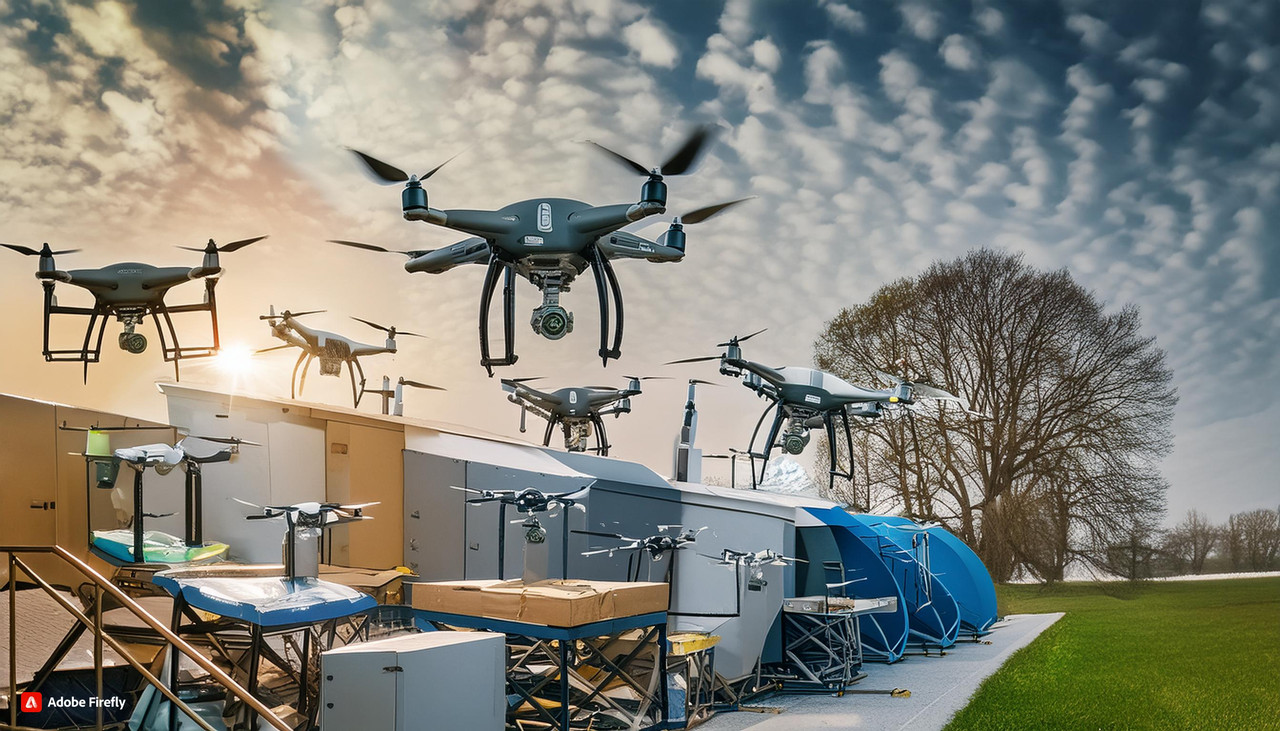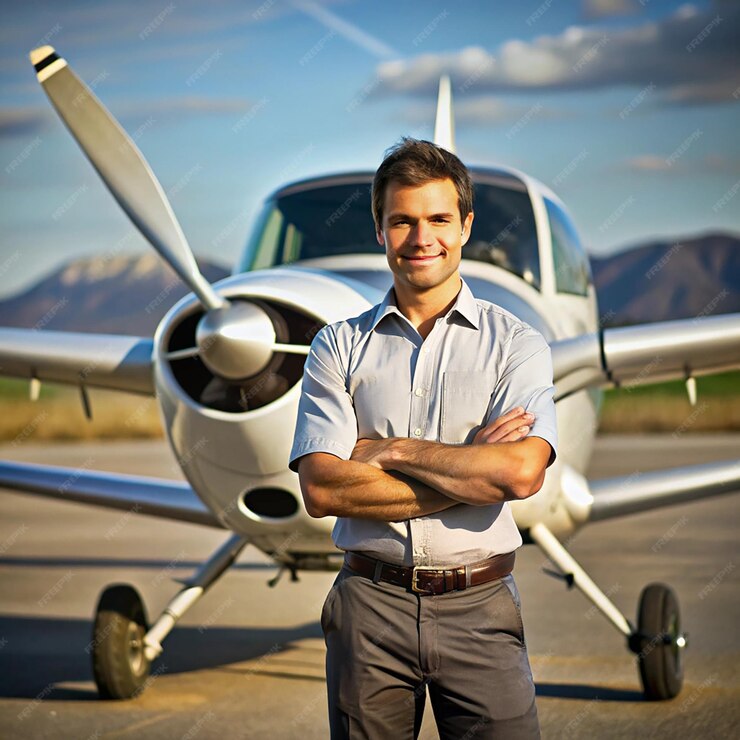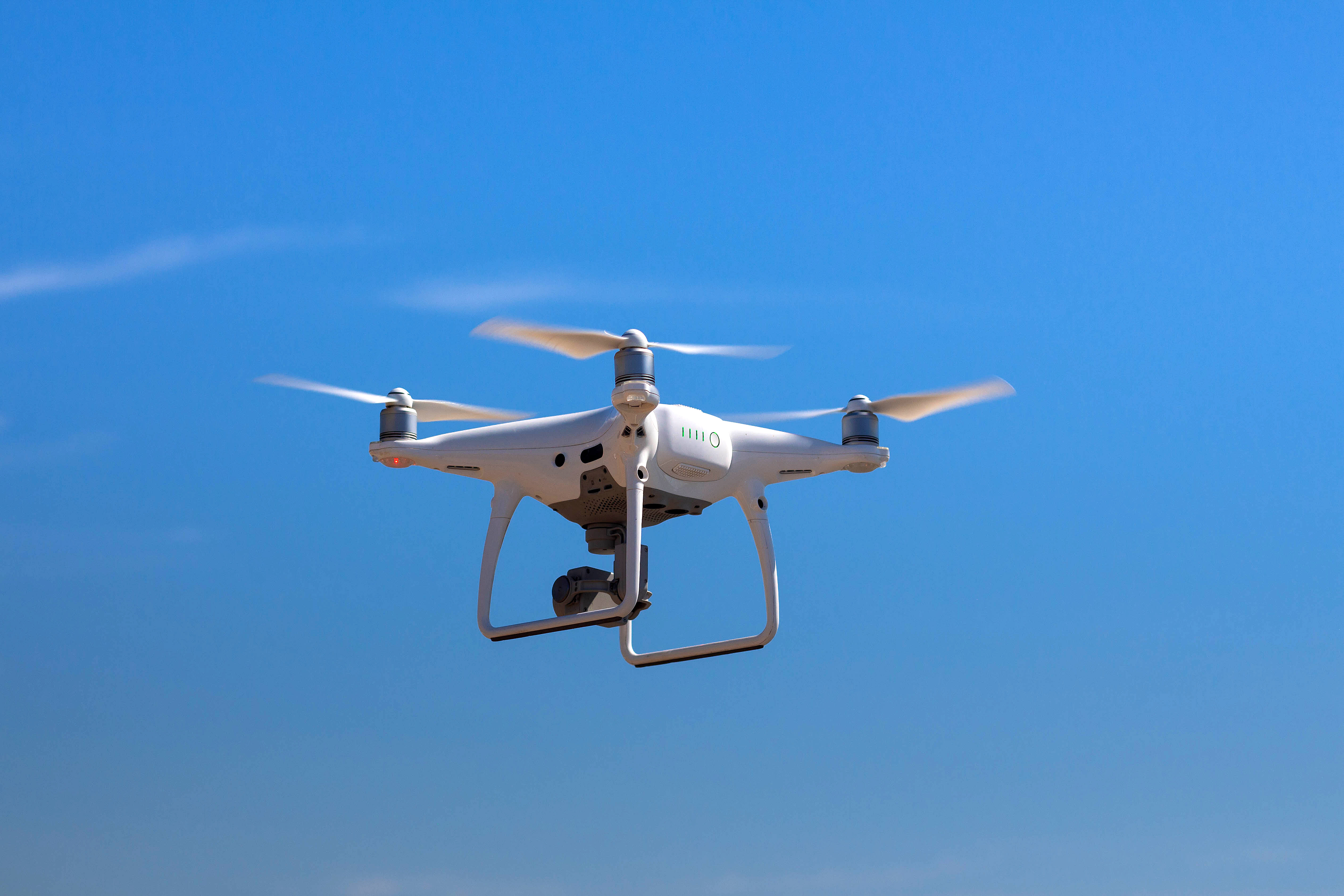
Drone Photography and Videography Tips from Experts

Drone photography and videography provide a supreme vantage point, altering familiar landscapes and scenes into spectacular visual narratives. With a drone, the sky becomes your creative playground, where every flight is a prospect to capture the world from a new perspective. But to master this art form, it takes more than just the knowledge to fly; you need to comprehend the nuances of drone tech and refine your technique.
This blog will take you beyond the basics, providing tips on drone photography and aerial videography tips to unlock a drone's full potential. From capturing extensive landscapes to creating cinematic scenes, we’ll discover how you can push the limits of what’s likely in aerial photography and videography.

Mastering Drone Settings for Optimal Imaging
Attaining spectacular aerial shots goes beyond launching your drone and capturing the scene below. The secret to pro-quality imagery boils down to understanding the drone camera settings, adjusting the gimbal for constancy, and familiarizing it with changing weather conditions. Correcting these settings will let you capture fine images and footage, regardless of the environment.

Be Sure to Check your Flying Skills and Drone Health
Before focusing on drone photography and videography, you must be able to power the drones without any hassle. Flying drones can be easy if one has proper training and complete knowledge about using the cameras and sensors to the best of one's abilities to take striking photos and videos.
It should also be remembered that before the drone is flown in the air to take good-quality photos and videos, all the pre-flight checks need to be completed so that there is no issue when the drone is in the air while filming and taking photos. Check the batteries, flight settings, and damage or loose fixings on the drone.
Take off from an open space and practice manoeuvres, flying precise patterns, and improving control of the drone. You should be familiar with all its functions. Practice the automatic ‘return to home’ function. Keep a check on the battery level during the flight. Strong winds or extreme temperatures can drain the battery quickly, and you will be forced to pull the drone down without completing the shooting of photos and videos of an event.

Ensure Safety and Abide by the Legal Norms
Every drone pilot should know and abide by the regulations of the regulatory authority, DGCA. Drone pilots should avoid flying in the close vicinity of airports and other restricted areas. They should keep at least 50m clear from buildings, roads, and people not under their control and at least 150m from congested areas and large gatherings of people.
When learning to fly a drone for photography and videography, discover an open area with few other people and obstacles, such as trees and overhead cables. Overall, continuously err on the side of caution and use common sense.
Several modern drones have collision avoidance technology, but it’s not dependable. Thin cables and branches might not be detected, and your drone might not have sensors that cover you while flying sideways or backward. You are far better off trusting your eyes and good flying skills.

Travelling with a Drone
With technological development, drones with good-quality cameras are getting smaller and lighter. Half the fun of having a drone is documenting landscapes from elevated angles, so naturally, you may want to take your drone on adventures.
This idea is largely feasible, but more than a few things should be considered in the planning phase. Check the local regulations about the use of drones for photography and videography. Drones are banned in many National Parks and some other prohibited areas.
One should be aware of the airline's policy on lithium polymer batteries. Batteries must be carried in hand luggage, and battery size restrictions exist. One should also be sensitive to local cultural sensitivities. In addition to safety matters, people might not take kindly to unceasingly hovering next to a temple or other cultural significance.

Get Creative with Camera Angles
In the excitement of controlling a drone, it is easy to neglect photographic considerations. Be creative with your drone videography and photography.
A drone photographer or videographer can use Google Earth to find promising new areas. Always look for the best time of day to get the best light to shoot the aerial photos and videos. Think about what you want to achieve in the aerial photos and videos.
Even after careful planning, don’t forget to be spontaneous. The shot you are after may not be achieved in one or two shots, and it may not work for some reason, but there is always a spectacular angle you hadn’t imagined. It is just a matter of finding the right angle and then taking the right shot.
Remember to take full control of your camera to get the best shots and videos. It is quite easy to leave the camera on fully ‘auto’ mode, and while this might give you acceptable results, it’s always better to take control yourself to get the best output.
Comprehend the effects of changing ISO, shutter speed, and aperture and use them to make your aerial photos and videos stand out.

Always keep a Close Eye on the Weather
One needs to know what the weather may have in store. Check the weather forecast before you set out with your new pride and joy.
The wind often catches people out. Each drone has a maximum flying speed. If the wind is faster than it, the drone won’t make any substantial progress into the wind.
Also, the wind will frequently be significantly stronger up high than ground level, chiefly if you take off from a sheltered spot. There are many tales of inexperienced drone pilots watching their drones disappear off at height on a strong wind.
Even if the wind speed is not that high, it may be stormy close to obstacles. Expect strong downdrafts and gusts in several directions, as well as downwind buildings, trees, cliffs, and other obstructions. If it is windy, give them a wider berth than usual.
A good rule of thumb is that things get interesting as the wind speeds increase above 15mph and above 20mph; it's perhaps best to keep the drone grounded unless you are an experienced pilot.
Rain and electronics usually don’t mix, so be aware of unforeseen deluges and try to keep your drone dry.
Lastly, you must keep your drone battery warm in very cold weather. If it is below 15C, keep the drone battery in an inside pocket until takeoff. Once it is in the air and the drone draws current, the battery will produce heat.
Summing Up the Scene
These are some expert tips for drone photography and videography, which, if followed, can produce striking photos and videos. Suppose you are also interested in drone photography and videography and looking for an institute where you can learn drone pilot training. In that case, you can come to us at Flapone Aviation. The training will help you achieve a remote pilot license, which is mandatory if you are to fly small drones for commercial purposes in India.
The price you have to pay to get trained to become a drone pilot is nothing when considering the quality of instruction you will receive. So, what are you waiting for? Learn how to pilot a drone and become an experienced drone photographer, surveyor, etc.
Related Blog
Latest updates and insights from Flapone Aviation.

What Types of Drones Are Present in the Market?
October 8, 2024

How to Become a Pilot After 12th in India?
February 7, 2025

What are the Basics of Drone Piloting?
February 7, 2025




Author Bio
A dynamic and seasoned content writer with 6 years of experience curating content for different platforms. With the knowledge of all the cogs of content writing and SEO, he has served in various industries. He believes that content is the kingpin, and if penned well, it has a lasting impact on the minds of the readers. Apart from content creation, he is also an ardent poetry lover and performer. He has two publications of his poetry collection, namely Alfaaz and Chestha